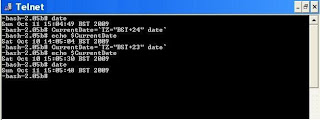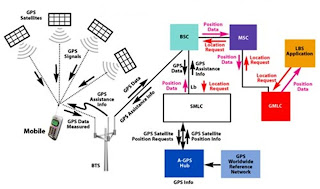
KnowledgeTree's wiki article on Web Service integration using JavaBeanshell interpreter to execute the Java code, I also modified the tester client application accordingly.
What's needed:
has been most helpful. Since I'm doing my development work on Windows, I've adapted the procedures slightly. And since ZK uses the
- Apache Axis 1.4
- Beanshell interpreter
- Java SE Runtime Environment (JRE)
- proxy classes in a jar file (ktws.jar)
set CP=axis-1_4/lib/axis.jar;axis-1_4/lib/commons-discovery-0.2.jar
set CP=%CP%;axis-1_4/lib/commons-logging-1.0.4.jar;axis-1_4/lib/jaxrpc.jar
set CP=%CP%;axis-1_4/lib/log4j-1.2.8.jar;axis-1_4/lib/saaj.jar
set CP=%CP%;axis-1_4/lib/wsdl4j-1.5.1.jar
java -cp %CP% org.apache.axis.wsdl.WSDL2Java -c T1 -p com.pipoltek.ktws http://docs.pipoltek.com/ktwebservice/webservice.php?wsdl
"%JAVA_HOME%\bin\javac" -d . -classpath %CP% com/pipoltek/ktws/*.java
"%JAVA_HOME%\bin\jar" cvf ktws.jar .\com\pipoltek\ktws\*.class
Here's the Beanshell script to execute a login via SOAP.
/*
filename: ktsoaptest.bsh
to run, type from the command-line:
java -cp bsh-2.0b4.jar bsh.Interpreter ktsoaptest.bsh
*/
// add axis classes
addClassPath ("./axis-1_4/lib/axis.jar");
addClassPath ("./axis-1_4/lib/axis-ant.jar");
addClassPath ("./axis-1_4/lib/jaxrpc.jar");
addClassPath ("./axis-1_4/lib/commons-logging-1.0.4.jar");
addClassPath ("./axis-1_4/lib/commons-discovery-0.2.jar");
addClassPath ("./axis-1_4/lib/log4j-1.2.8.jar");
addClassPath ("./axis-1_4/lib/wsdl4j-1.5.1.jar");
addClassPath ("./axis-1_4/lib/saaj.jar");
// knowledgetree proxy classes
addClassPath ("./ktws.jar");
// others
addClassPath ("./lib/activation.jar");
addClassPath ("./lib/mail.jar");
import com.pipoltek.ktws.KnowledgeTreeBindingStub;
import com.pipoltek.ktws.Kt_response;
import com.pipoltek.ktws.Kt_folder_contents;
import com.pipoltek.ktws.Kt_workflow_transitions_response;
import org.apache.axis.client.Service;
import java.net.URL;
import com.pipoltek.ktws.Kt_folder_item;
URL url = new URL("http://kt352c.pipoltek.com/ktwebservice/webservice.php");
KnowledgeTreeBindingStub stub = new KnowledgeTreeBindingStub(url, new Service());
System.out.println("Logging into KnowledgeTree");
Kt_response response = stub.login("rexjun","cabanilla","127.0.0.1");
int status_code=response.getStatus_code();
String session;
if (status_code == 0) {
session = response.getMessage();
System.out.println("Session: " + session);
} else {
System.out.println("Status Code: " + status_code);
System.out.println("Session: " + response.getMessage());
return;
}
I'll be using this piece of code to invoke SOAP services from my ZK app. More on this later..








